Creating a truly sustainable living space requires conscious effort and a commitment to eco-friendly practices. This article explores a range of innovative and practical eco-friendly ideas for transforming your home into an environmentally responsible haven. We delve into simple yet impactful strategies for sustainable living, covering topics such as energy conservation, water efficiency, waste reduction, and the selection of eco-friendly materials for construction and decoration. Discover how incorporating these sustainable design elements can significantly reduce your environmental footprint and contribute to a healthier, more harmonious home environment while fostering a lifestyle that promotes both environmental sustainability and personal well-being.
Solar Roof Panels
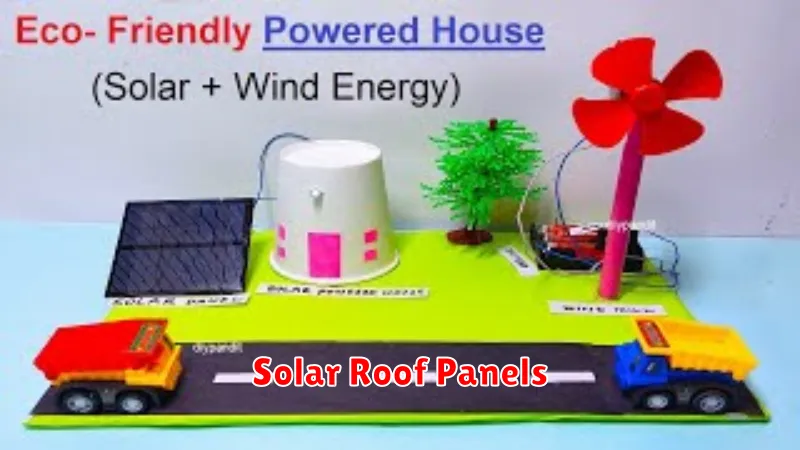
Solar roof panels represent a significant step towards sustainable living. By converting sunlight into electricity, they drastically reduce reliance on fossil fuels, minimizing your carbon footprint and lowering your energy bills. This renewable energy source offers long-term cost savings and environmental benefits.
The installation of solar panels can vary in cost depending on factors such as roof size and energy needs. However, government incentives and rebates often offset initial expenses, making them a more financially accessible option than previously thought. Moreover, the increasing efficiency and lifespan of solar panels further enhance their long-term value proposition.
Beyond financial advantages, integrating solar roof panels contributes to a cleaner and healthier environment. They significantly decrease greenhouse gas emissions, combating climate change and improving air quality. This makes them a powerful tool for individuals committed to eco-conscious living and a sustainable future.
Low-VOC Wall Paints
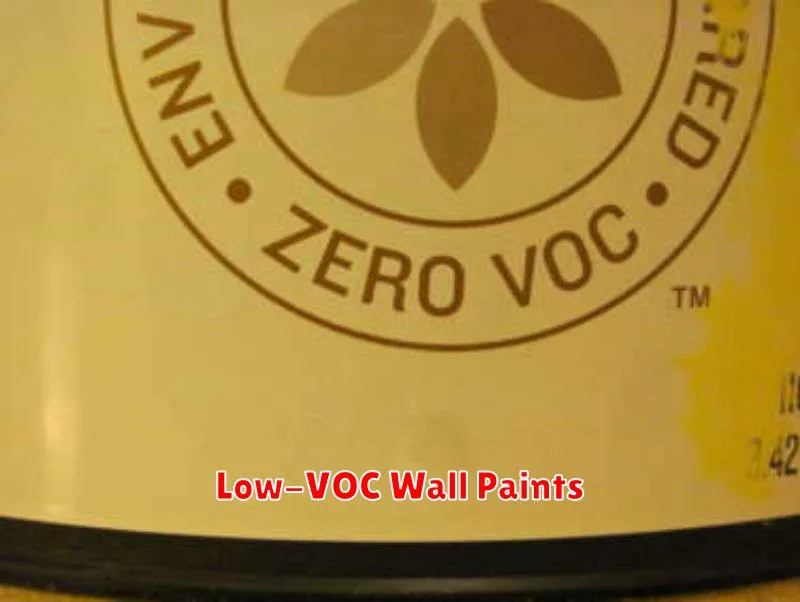
Creating a sustainable living space involves mindful choices in all aspects of design and construction. One crucial area is selecting low-VOC (volatile organic compound) wall paints. Traditional paints often release significant amounts of VOCs, contributing to indoor air pollution and negatively impacting health. Opting for low-VOC alternatives drastically reduces this environmental and health hazard.
Low-VOC paints contain significantly fewer harmful chemicals, resulting in cleaner indoor air. This is especially beneficial for individuals with respiratory sensitivities or allergies. While completely VOC-free paints are rare, low-VOC options offer a substantial improvement in air quality, contributing to a healthier and more sustainable home environment. Look for certifications like GREENGUARD Gold for assurance of low emissions.
When choosing low-VOC wall paints, consider the paint’s overall composition. Look for paints made with natural pigments and binders, minimizing the use of synthetic chemicals. While they might be slightly more expensive upfront, the long-term health and environmental benefits far outweigh the additional cost, making them a worthwhile investment in sustainable living.
Bamboo Flooring
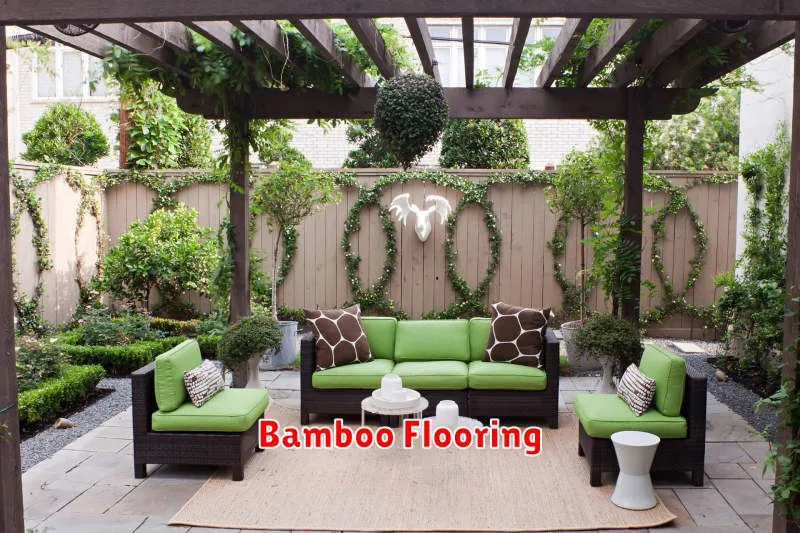
Bamboo flooring offers a sustainable and stylish alternative to traditional hardwood. A rapidly renewable resource, bamboo matures much faster than hardwood trees, resulting in a significantly lower environmental impact. Its inherent strength and durability make it a practical choice for high-traffic areas.
Compared to other flooring options, bamboo boasts a smaller carbon footprint. Its cultivation requires less water and pesticides, minimizing its impact on ecosystems. Furthermore, many bamboo flooring products are manufactured using sustainable practices, further reducing their environmental burden. Consider bamboo flooring’s versatility; it is available in various styles and finishes to complement diverse interior designs.
Choosing bamboo flooring contributes to responsible consumption and reduces the demand for slower-growing hardwoods. Its aesthetic appeal, combined with its eco-friendly properties, makes it an excellent choice for individuals seeking to create a sustainable and beautiful living space. The longevity and resilience of bamboo flooring also contribute to its overall sustainability, minimizing the need for frequent replacements.
LED Energy-Saving Lights

Switching to LED (Light Emitting Diode) lighting is a significant step towards creating a sustainable living space. LEDs consume significantly less energy than incandescent or even CFL bulbs, resulting in lower electricity bills and a reduced carbon footprint. Their long lifespan also minimizes waste from frequent bulb replacements.
The energy efficiency of LEDs translates directly into cost savings. While the initial purchase price might be slightly higher, the long-term savings on energy consumption far outweigh the initial investment. This makes them a financially sound and environmentally responsible choice for homeowners and businesses alike.
Beyond the economic and environmental benefits, LEDs offer superior performance. They produce brighter, higher-quality light with less heat output, contributing to a more comfortable and energy-efficient indoor environment. This makes them a practical and effective choice for promoting sustainability in any living space.
Water-Efficient Faucets

Water-efficient faucets are a simple yet impactful way to promote sustainability in your living space. By significantly reducing water consumption compared to standard faucets, they contribute to conserving this precious resource. The low-flow designs often incorporate aerators or other technologies to maintain water pressure while minimizing gallons used per minute.
The benefits extend beyond environmental responsibility. Reduced water usage translates to lower water bills, offering substantial cost savings over time. Many water-efficient models are also durable and long-lasting, further enhancing their value proposition. Consider the WaterSense label when choosing a faucet, as it guarantees adherence to strict water efficiency standards.
Installing water-efficient faucets is a relatively straightforward process, making it an accessible upgrade for homeowners seeking to improve their home’s environmental footprint. The long-term rewards—both financial and environmental—make this a worthwhile investment for anyone committed to sustainable living.
Recycled Glass Countertops

Recycled glass countertops offer a sustainable and stylish alternative to traditional countertop materials. Made from crushed glass bottles and other recycled glass, these countertops significantly reduce landfill waste and lessen the environmental impact associated with manufacturing new materials. They are durable, heat-resistant, and come in a variety of colors and textures, offering considerable design flexibility.
The manufacturing process involves melting and compacting the recycled glass, resulting in a non-porous surface that is easy to clean and maintain. This durability translates to a long lifespan, minimizing the need for replacements and further reducing waste. Furthermore, the reduced energy consumption during the manufacturing process compared to traditional stone countertops contributes to their eco-friendly profile.
Choosing recycled glass countertops is a tangible step towards a more sustainable lifestyle. By incorporating this eco-conscious choice into your home design, you contribute to environmental conservation while enjoying the beauty and practicality of a unique and durable countertop.
Smart Home Thermostats

Smart home thermostats offer a significant opportunity to reduce your home’s energy consumption and carbon footprint. Unlike traditional thermostats, smart models learn your preferences and adjust the temperature automatically, optimizing heating and cooling cycles to minimize waste. This intelligent control leads to substantial savings on energy bills and contributes to a more sustainable lifestyle.
Many smart thermostats provide features such as geofencing, which automatically adjusts the temperature based on your location, ensuring your home isn’t heated or cooled unnecessarily when you’re away. Energy-saving modes and detailed energy usage reports further empower you to make informed decisions about your energy consumption and identify areas for improvement. The ability to program specific schedules and even integrate with other smart home devices enhances their utility and effectiveness.
By investing in a smart thermostat, you actively participate in reducing your home’s environmental impact. The long-term energy savings, combined with the convenience and control offered, make it a worthwhile investment for environmentally conscious homeowners seeking to create a more sustainable living space.
Biodegradable Plant Pots
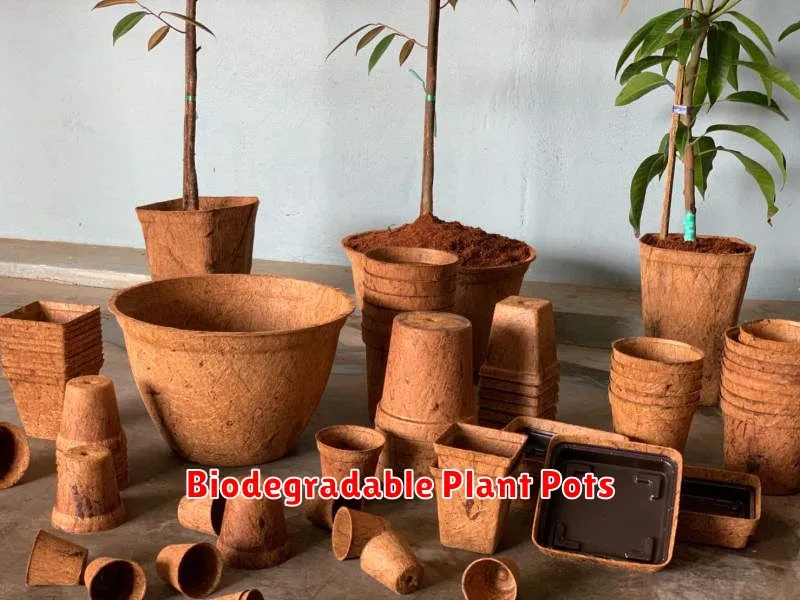
Biodegradable plant pots offer a sustainable alternative to traditional plastic containers. Made from materials like peat, coconut coir, or recycled paper pulp, these pots decompose naturally, eliminating plastic waste and enriching the soil when the plant is transplanted. This reduces the environmental impact associated with plastic pot disposal and landfill accumulation.
Choosing biodegradable options supports a circular economy by minimizing waste and promoting the use of renewable resources. The decomposition process also provides beneficial nutrients to the soil, further enhancing plant growth and health. This contrasts sharply with plastic pots, which persist in the environment for hundreds of years.
The ease of use is comparable to plastic pots, making them a practical and convenient choice for both home gardeners and commercial nurseries. While the initial cost may be slightly higher, the long-term environmental benefits and contribution to sustainable living significantly outweigh this difference.
Indoor Air Purifiers
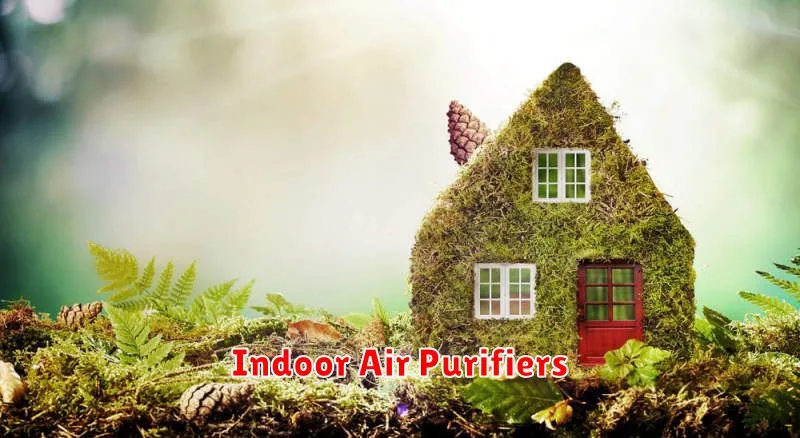
Investing in an indoor air purifier is a significant step towards creating a sustainable and healthy living space. These devices actively remove pollutants such as dust, pollen, pet dander, mold spores, and volatile organic compounds (VOCs) from the air, improving indoor air quality and reducing the need for harsh chemical cleaning agents. Choosing a model with a HEPA filter ensures effective filtration of even the smallest airborne particles.
Many air purifiers on the market offer energy-efficient operation, minimizing their environmental impact. Look for models with Energy Star certification to ensure they meet stringent energy efficiency standards. Regularly changing the filters is crucial for maintaining optimal performance and extending the purifier’s lifespan, thereby reducing waste. Consider purchasing replacement filters made from recycled materials whenever possible.
Beyond the direct benefits to your health and home, an air purifier contributes to a more sustainable lifestyle by reducing reliance on harsh cleaning chemicals and promoting a healthier indoor environment. This ultimately leads to less waste generated from disposable cleaning products and fewer health issues requiring medical intervention, fostering a more environmentally responsible approach to home maintenance.
Eco-Friendly Storage Solutions
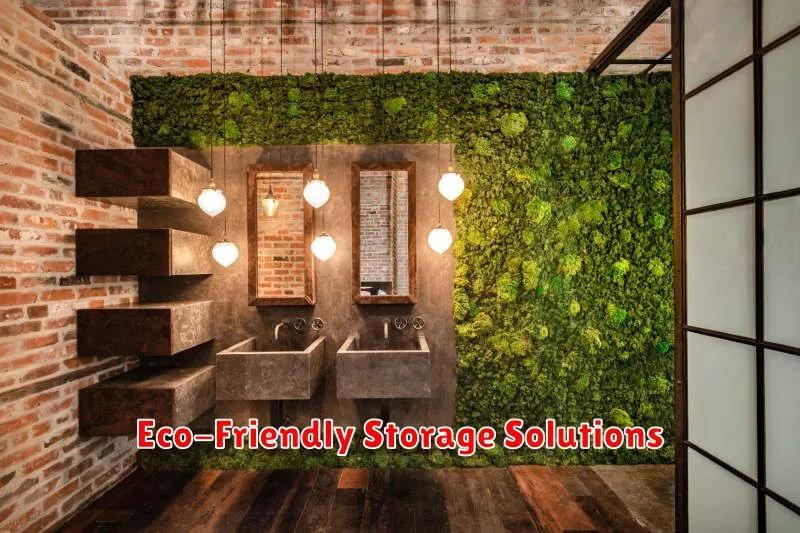
Creating a sustainable living space involves mindful choices in every aspect, including storage. Sustainable storage solutions minimize environmental impact by prioritizing recycled, renewable, and biodegradable materials. Consider using repurposed containers like glass jars, vintage wooden crates, or fabric baskets instead of plastic bins. Opting for these alternatives significantly reduces reliance on new plastic production, a major contributor to pollution.
When purchasing new storage items, prioritize those made from recycled materials, such as plastic made from post-consumer waste, or sustainable materials like bamboo or organic cotton. Look for products with certifications like FSC (Forest Stewardship Council) to ensure responsible sourcing of wood and other natural resources. Choose durable and long-lasting items to reduce the need for frequent replacements, thereby minimizing waste in the long run.
Furthermore, implementing efficient storage strategies reduces the overall need for storage. Regular decluttering and mindful consumption contribute to minimizing the volume of items requiring storage. Vertical storage solutions and multi-functional furniture can also maximize space efficiency and reduce the overall need for storage units. By adopting these practices, you can significantly improve the environmental footprint of your storage solutions and contribute to a greener living space.

